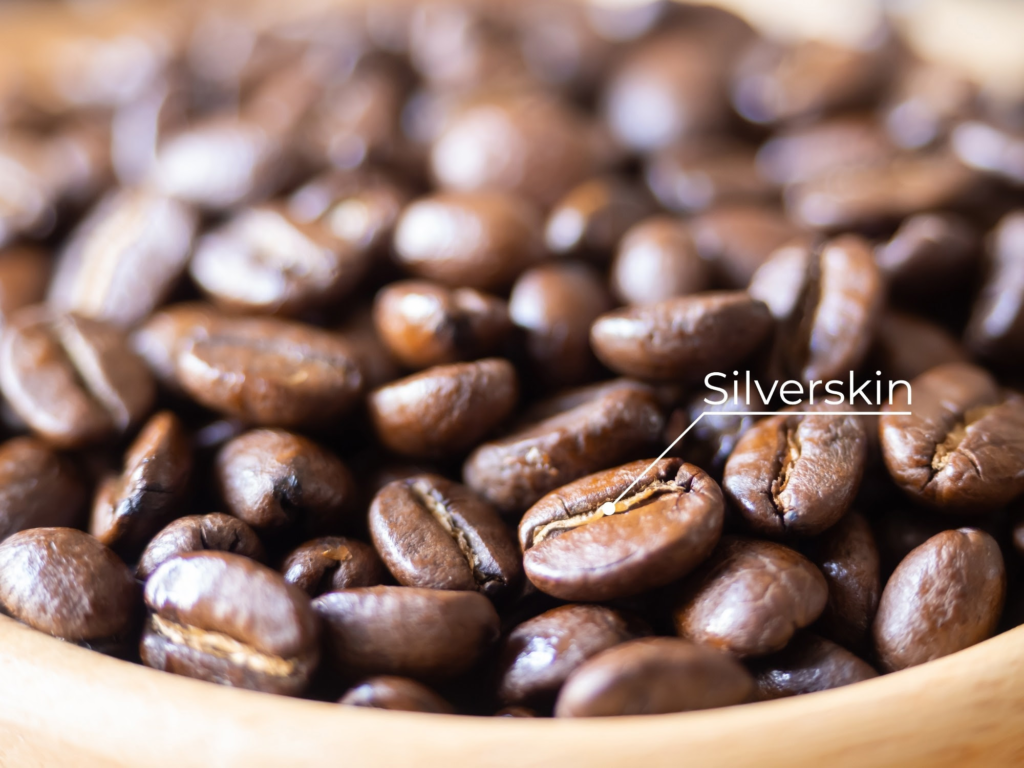Pooja Toshniwal Paharia
By Pooja Toshniwal PahariaOct 13 2023
Reviewed by Lily Ramsey, LLM
In a recent study published in Molecules, researchers investigated the anti-aging properties of coffee silverskin extracts (CSE).

Study: Coffee Silverskin Phytocompounds as a Novel Anti-Aging Functional Food: A Pharmacoinformatic Approach Combined with In Vitro Study. Image Credit: Benjavisa Ruangvaree Art/Shutterstock.com
Background
Extrinsic aging, driven by environmental factors such as climatic change and pollution, and intrinsic biological factors influence the aging process, characterized by reactive oxygen species (ROS) formation.
A popular beverage, coffee produces millions of tons of coffee silverskin (CS), a thin layer that can be a source of waste and environmental pollution. CS has potential applications in various health sectors due to its antioxidant properties.
About the study
In the present study, researchers investigated the anti-aging potential of CS.
Green beans of Coffea arabica and Coffea robusta were roasted for nine minutes at a maximum temperature of 195 °C to produce CS. Under nitrogen, the silverskin was crushed into a fine powder and kept at 4.0 °C until extraction.
At 20 °C, CS powder was sonicated for two hours at 40 kHz. All samples were filtered using filter paper, followed by lyophilization of the extract.
Subsequently, the CSEs were kept in aluminum foil at -20 °C in the dark. Ultrasonic sonicators were used for ultrasound-assisted extraction (UAE) of CSEs. Optical density (OD) was measured using spectrophotometers in proteomic analysis.
Protein structures were accessed from the Protein Data Bank (PDB), and the PubChem database was searched for molecular structural data. Antibodies such as anti-sirtuin 1 (SIRT1), anti-phosphorylated-AMPK, mTOR, and anti-phosphorylated-mTOR were used to analyze proteins.
By integrating the pharmacoinformatic technique with molecular docking simulation and in vitro mTOR/AMPK/SIRT1 pathway regulation, the researchers reported profiling metabolites or phytochemicals, antioxidant activity, and potential anti-aging of coffee silverskin (CS).
Further, redocking was performed to ensure the accuracy of the docking technique, which involved relocating the molecular ligands into the binding sites of the protein targets.
The variation between the initial ligand locations and their positions after redocking was measured using root mean square deviation (RMSD) measurements.
Furthermore, DPPH and ABTS inhibition antioxidant assays were performed using Trolox as a control to investigate free radical inhibition by the Robusta-CSE (rCSE) and Arabica-CSE (aCSE) using HPLC-ESI-high-resolution mass spectrometry (HRMS)/MS, and the half-maximal effective concentration (EC50) values were determined.
Results
Epicatechin, Kaempferol, Quercitrin, 4-hydroxycinnamic acid, and Gallic acid were found in the aCSE extract, whereas Shikimic acid, Caffeic acid, Naringin, Rutin, and (+)-Catechin were found in the rCSE extract. Flavonoids and polyphenols were the most abundant constituents in the CSEs.
The rCSEs components such as Kaempferol, Quercitrin, and Epicatechin, and aCSE components, such as Naringin and (+)-Catechin, inhibited mTOR, hypoxia-inducible factor-1 alpha (HIF-1α), and human inducible nitric oxide synthase (iNOS).
In the molecular docking studies, receptors such as mTOR, iNOS, HIF-1α, and ROS kinase 1 (ROS1) showed root mean square deviation (RMSD) values ≤2.0. The in vitro biological activity assessment of antioxidant and anti-aging activities, rCSE, revealed the same promising potential as the results of the molecular docking simulation.
The EC50 values indicated that rCSE had more antioxidant activity than aCSE. Furthermore, rCSE controlled AMPK/SIRT1/mTOR expression much better than rCSE. However, the two-way ANOVA (MANOVA) test findings revealed no significant differences in DPPH inhibition and ABTS radical scavenging activity between Trolox, rCSE, and aCSE antioxidant activity control.
Both CS and rCS elevated AMPK/SIRT1 expression while decreasing mTOR expression after 12 hours of incubation, while rCS demonstrated sustained effects after 24 hours.
HIF-1α is an important transcription factor in age-associated diseases, especially in controlling cell senescence associated with cardiovascular aging. HIF-1α impacts inflammatory, oxidative stress-related, and metabolic pathways.
Epicatechin, a potential therapeutic target for HIF-1α, inhibits the production of iNOS proteins by inhibiting the nuclear factor-kappa B (NF-κB), AMPK, and Akt/mTOR signaling pathways.
Kaempferol inhibits the NF-κB pathway, regulates iNOS gene expression, and prevents age-associated NF-κB activation. Robust CSE and Arabica CSE increase AMPK and SIRT1 and reduce mTOR expression, which directs cellular metabolic machinations.
These activities include proteostasis maintenance, autophagy management, precise mitochondrial function supervision, modulation of cellular senescence dynamics, and regulation of stem cell regenerative capacity.
Conclusion
Overall, the study findings highlighted the advantages of CS as a functional food option for anti-aging and its potential for rapid development.
CS, a coffee roasting byproduct, demonstrated significant antioxidant and nutritional properties due to its low-fat and high-fiber bioactive content, which includes flavonoids, polyphenols, proteins, magnesium, vitamin C, and calcium.
Robusta coffee has more antioxidant capabilities than Arabica coffee, as evidenced by a lower EC50 value and stronger free radical inhibition. However, further research, including in vivo studies and human trials, must determine rCSE effectiveness.
Journal reference:
Hayes, C.; Nurkolis, F.; Laksemi, D. A. A.S.; Chung, S.; Park, M.N.; Choi,M.; Choi, J.; Darmaputra, I.G.N.; Gunawan, W.B.; Lele, J.A.J.M.N.; et al. (2023) Coffee Silverskin Phytocompounds as a Novel Anti-Aging Functional Food: A Pharmacoinformatic Approach Combined with In Vitro Study, Molecules., doi:https://doi.org/10.3390/molecules28207037. https://www.mdpi.com/1420-3049/28/20/7037

Leave a Reply